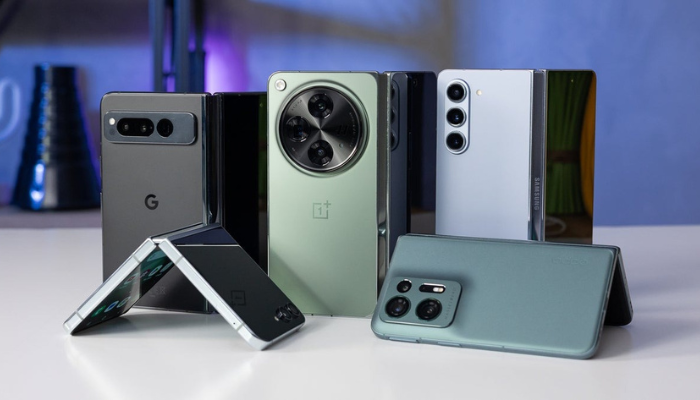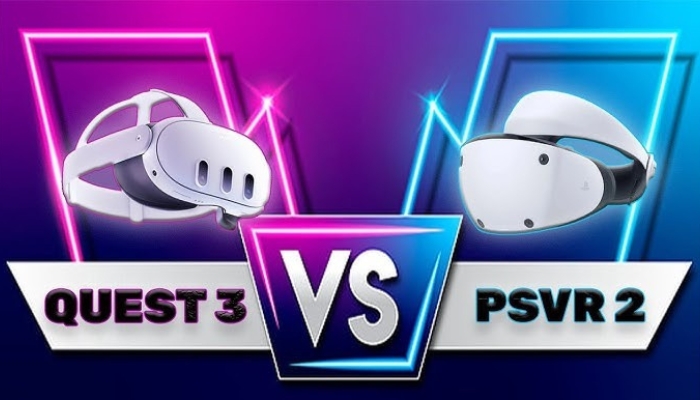
Last updated on March 23rd, 2024 at 08:30 am
Samsung’s Galaxy Z Fold competes against Google Pixel, OnePlus, and Honor to determine the top folding phone-tablet
Is it a phone? Is it a tablet? A new category of folding devices aims to cater to consumers seeking the best of both worlds, featuring a phone-like screen on the outside and a large display on the inside that unfolds like a book.
While each excels in different aspects, the question remains: which is the ultimate choice? To determine the folding phone champion, I rigorously tested the most promising devices in a round-by-round competition.
The competitors
Samsung Galaxy Z Fold 5 – the pioneer in this category, now in its fifth iteration
Google Pixel Fold – the inaugural folding phone from the Android manufacturer
OnePlus Open – the debut foldable device from OnePlus, built on third-generation technology from its parent company Oppo
Honor Magic V2 – the upcoming third-generation foldable set to be available in Europe from late January
Outside screen
The size of the external screen significantly impacts the phone-like feel of these foldables, and this is where they vary the most.
The Z Fold 5 features a long and narrow external screen, leading to cramped typing. The Pixel Fold, on the other hand, is short and wide, offering a full-width keyboard but making apps appear a bit squat. The Open and Magic V2 models are more akin to a traditional phone, making them easier to use when folded.
Winner: Honor Magic V2 – offering the thinnest and most phone-like experience.
Inside screen
The size and shape of the internal screens are relatively consistent across the brands. The OnePlus and Honor models are more square when unfolded, while others are slightly longer on one side, akin to an iPad display.
All screens boast high refresh rates, crispness, and brightness. Some excel at repelling fingerprints and reducing glare from overhead lights, while others, like Samsung, support stylus input.
The main differences lie in the screen’s texture under your finger and the visibility of the fold crease at its center. The Z Fold 5 has the most solid-feeling screen, but the Open has the least noticeable crease, surpassing all others.
Winner: OnePlus Open – offering the least visible and smoothest-feeling crease.
Hinge
The design and functionality of the hinge are crucial factors in the usability of a folding phone. The Magic V2 features the slimmest hinge, which helps it stay compact when used as a phone, but it may not hold the screen open at as wide a range of angles. The Open and Pixel Fold are slightly thicker, with the latter being stiffer to open and requiring a bit more force to lay completely flat. The Z Fold 5 has the largest, stiffest, and most robust-feeling hinge of the group, allowing for a more secure hold at various angles when open.
Winner: OnePlus Open – it strikes the best balance between thickness and opening action.
Weight and thickness
The weight and thickness of a folding phone impact its usability as both a phone and a tablet. The Pixel Fold is the heaviest among the contenders, weighing 283g, followed by the Z Fold 5 at 253g. The Open and Magic V2 are lighter at 239g and 237g, respectively.
When folded, the contenders vary in thickness, affecting their bulkiness in the hand and pocket. The Z Fold 5 is the thickest at 13.4mm, with the Pixel Fold and Open following at 12.1mm and 11.7mm, respectively.
Winner: Honor Magic V2 – at just 10.1mm, it is similar in thickness to a regular phone in a case.
Durability, repair and sustainability
All folding phones are more delicate than regular phones due to the softer material needed for the display to bend. However, they vary in water and dust resistance, repair options, and construction materials.
Samsung and Google offer IPX8 water resistance, similar to regular phones. The OnePlus Open has IPX4 splash resistance, while the Honor Magic V2 lacks any rating, making them less suitable for use near water.
All manufacturers offer repair services for broken devices, both within and outside the warranty period. Samsung has a comprehensive network of repairers, while Google provides various direct and third-party services, including iSmash stores. OnePlus and Honor also have their own repair services.
Samsung and Google go a step further by offering parts and instructions for DIY repairs. Additionally, the Pixel Fold and Z Fold 5 are made of recycled materials, including aluminium, glass, and plastic.
Winner: Samsung Galaxy Z Fold 5 – it offers the best water resistance, use of recycled materials, and a wide repair network.
Battery life
Battery life on most tablet-size folding phones is comparable to standard phones. The Pixel Fold has the shortest battery life at around 32 hours between charges. The OnePlus Open comes in second with about 46 hours, just behind the Z Fold 5, which lasts for 48 hours. The battery life of the Honor Magic V2 is expected to be similar, but this cannot be confirmed until the European version is released.
Winner: Samsung Galaxy Z Fold 5 – it offers longer battery life.
Processing power
Three of the folding phones use the Qualcomm Snapdragon 8 Gen 2 chip, while the Pixel Fold utilizes Google’s Tensor G2 chip. All four devices are fast and responsive, but the Pixel Fold lags behind in raw performance, being slightly slower and running hotter.
Winner: Samsung Galaxy Z Fold 5 – its customised Qualcomm chip is slightly faster.
Software and apps
All four folding phones run on Android, but their software varies in how they handle multiple screens, multitasking, and high-end features.
The Pixel Fold receives Android updates ahead of the competition, but it falls short in multitasking, limited to two apps on screen at a time and unable to resize apps to fit the display.
The OnePlus Open introduces innovative ideas in its OxygenOS for managing multiple on-screen apps. It features a virtual “canvas” larger than the physical screen, allowing apps to stay full-sized and move into full view when needed, avoiding resizing issues. The Honor Magic V2 also offers a robust multitasking system, allowing multiple small windowed apps and a split-screen system, although it may be less intuitive to use.
Samsung’s OneUI stands out for its ability to resize apps, display up to eight apps on screen simultaneously, and provide various options for launching and adding apps into multiple layouts, which can be remembered for future use. Samsung’s tools, such as Flex mode, enhance the user experience when the phone is partially open or closed. Additionally, custom home screen layouts for both the inside and outside screens, along with other tweaks, fully leverage the device’s form factor. Samsung’s Dex mode even transforms the Z Fold 5 into an Android desktop computer when connected to a screen and keyboard.
Winner: Samsung Galaxy Z Fold 5 – offers the most powerful and customizable software for the folding form factor.
Camera
All four folding phones run on Android, but their software varies in how they handle multiple screens, multitasking, and high-end features.
The Pixel Fold receives Android updates ahead of the competition, but it falls short in multitasking, limited to two apps on screen at a time and unable to resize apps to fit the display.
The OnePlus Open introduces innovative ideas in its OxygenOS for managing multiple on-screen apps. It features a virtual “canvas” larger than the physical screen, allowing apps to stay full-sized and move into full view when needed, avoiding resizing issues. The Honor Magic V2 also offers a robust multitasking system, allowing multiple small windowed apps and a split-screen system, although it may be less intuitive to use.
Samsung’s OneUI stands out for its ability to resize apps, display up to eight apps on screen simultaneously, and provide various options for launching and adding apps into multiple layouts, which can be remembered for future use. Samsung’s tools, such as Flex mode, enhance the user experience when the phone is partially open or closed. Additionally, custom home screen layouts for both the inside and outside screens, along with other tweaks, fully leverage the device’s form factor. Samsung’s Dex mode even transforms the Z Fold 5 into an Android desktop computer when connected to a screen and keyboard.
Winner: Samsung Galaxy Z Fold 5 – offers the most powerful and customizable software for the folding form factor.
Price
Despite facing some strong competition, folding phones remain exceedingly costly. The Z Fold 5 and Pixel Fold are the most expensive, priced at £1,749 ($1,799.99), while the Open is slightly more affordable at £1,599 ($1,700). The Honor Magic V2 is anticipated to be priced similarly.
Trade-in programs can help offset the cost, but none of these folding phones are considered budget-friendly.
Winner: OnePlus Open – it’s slightly more affordable.
Verdict
While facing significant competition in the folding phone-tablet market, Samsung’s Galaxy Z Fold 5 emerges as the winner in four distinct categories, securing its position at the top.
For those seeking alternatives to Samsung, compelling options exist, with the OnePlus Open posing a strong challenge, winning in three categories. Google’s Pixel Fold excels in the crucial camera department, while Honor’s Magic V2 offers a glimpse into the future direction of these devices: thinner and less cumbersome.




